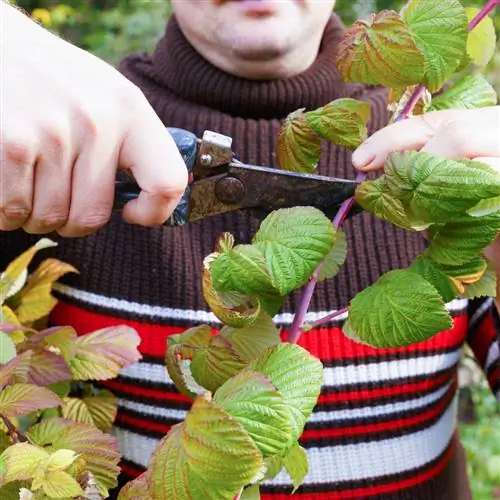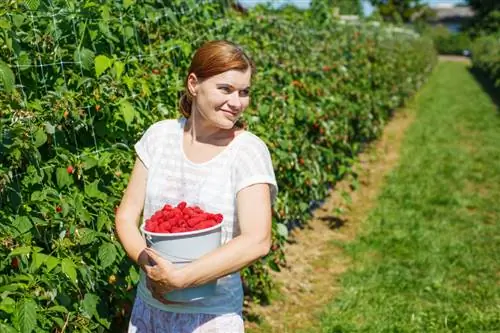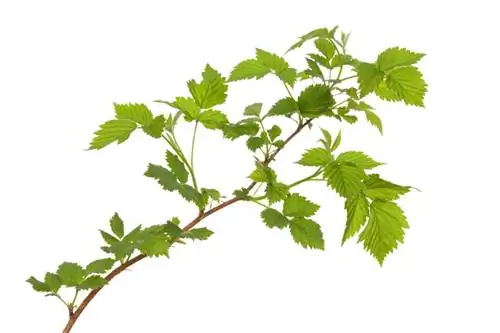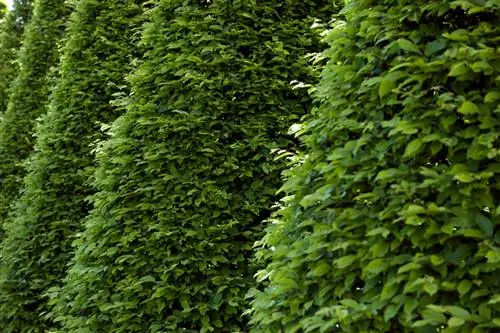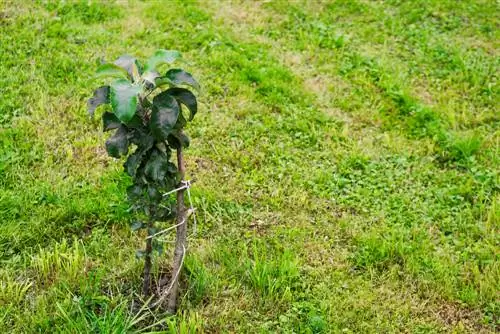- Author admin [email protected].
- Public 2023-12-16 16:46.
- Last modified 2025-06-01 06:02.
So-called columnar raspberries are often offered in specialist plant shops. In contrast to many other columnar fruit varieties, when it comes to pruning and care, raspberries have a special characteristic of their growth and fruit yield that needs to be taken into account.
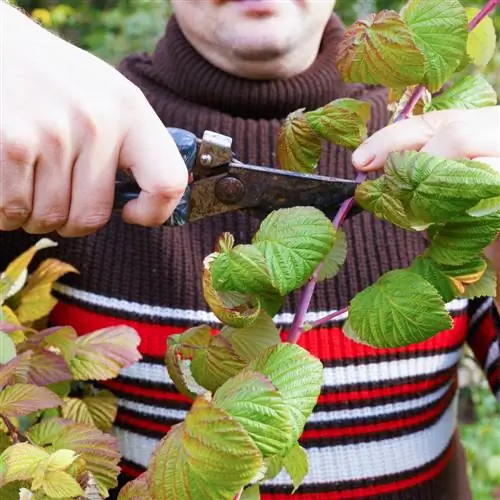
How do I cut a columnar raspberry correctly?
To cut a columnar raspberry, you should attach new canes to a trellis, cut off side shoots and remove old canes. This process should be carried out up to twice a year to maintain the preferred column shape.
Raspberries in column form - trade stunt with a short shelf life
A columnar pear or a columnar cherry continues to grow to a certain extent despite its rather squat growth form due to breeding parameters and, even with regular pruning, develops an increasingly thick trunk and a strong rootstock over time, even with regular pruning. Raspberries follow a fundamentally different pattern with their growth, as they renew their entire plant mass with the growth of new canes right next to the old canes every two years at the latest. If so-called “columnar raspberries” are offered in specialist plant shops, you can by no means rely on a consistent columnar shape without special care measures. In most cases, maintaining a columnar shape is made easier by using an appropriate climbing trellis. However, newly grown canes still need to be specifically guided into a columnar shape and secured, while old canes die off and need to be removed.
Train your own raspberries into a columnar shape
Although there are differences between the growth parameters of different raspberry varieties, in principle almost all raspberries can be given a columnar shape by cutting and tying them in a targeted manner. To do this, the newly grown rods are simply attached to a trellis using binding wire (€8.00 on Amazon), binding raffia or special retaining clips and any shoots growing laterally or upwards are cut off with sharp secateurs. This process must be repeated up to twice a year.
Benefits of columnar raspberry bushes
If raspberry bushes are trained to an upright columnar shape, this certainly has advantages:
- better ventilation and drying of the individual rods
- improved tanning
- easier harvest
- a generally tidier look in the raspberry bed
- better overview of old and new rods
Tip
In order to grow a particularly impressive raspberry column, different types of raspberries (e.g. with different colored fruits) can be combined. In addition to the annual and biennial fruiting varieties, the trade now also stocks raspberry varieties that enable two harvests per year. The two-year-old canes can then be removed after the first harvest so that the one-year-old canes receive even more light until the second harvest of the year.

